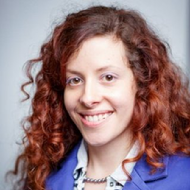Insights into alpha-synuclein oligomer interactions with model membranes
Promotion date: November 5.
Promotor: Prof. dr. Vinod Subramaniam
Assistant promotor: Prof. dr. Mireille Claessens
| This thesis gives insights into the biophysical mechanisms of α-synuclein (αS) oligomer-membrane interactions. Model membranes of different compositions are used to mimic physiological membranes. The way αS oligomers bind and permeabilize model membranes and how these activities are modulated by membrane charge and lipid composition, is investigated. A focus is given to the mimics of mitochondrial inner membranes and plasma membrane inner leaflets, as these are thought to be primary of oligomer-induced damage. It has been proven that the toxicity of the externally added oligomers depends on the availability and toxicity of additional compounds rather than on the oligomers themselves. A conceptual step has been taken: considering αS oligomers as small multivalent biological nanoparticles that cause formation of holes in the membrane or membrane thinning. The observed uncontrolled and efficient hemifusion of vesicles sheds a new light on the possible toxicity of oligomers in Parkinson’s disease. |
Was your PhD work fundamental in nature?
The primary aim was to study the biophysical mechanisms of oligomer-membranes on a molecular level. Better understanding of these mechanisms might shed light on the long-term kinetics on protein level involving processes vital in developing Parkinson’s disease.
Small angle light scattering experiments done in ESRF/Grenoble were set to determine the aggregation number of oligomers (or: how many monomers are present in one oligomer). Preparation of the samples had to be performed accurately. This often took two full working days. Also confocal microscopy was used to determine the binding. In case of the preparation of lipid vesicles another day had to be accounted for. With fluorescence spectroscopy measurements we were able to determine the permeabilization of oligomers using dye release assay.
An astonishing finding was made at the end of the PhD project, involving multivalent oligomers which might disturb membrane processes of the cell, leading to hemifusion. We found that these oligomers act very much like multivalent biological nanoparticles. Being able to study this class of membranes in this new way was an unexpected result, and was one of the most memorable moments during my PhD project.
In what journals did you publish your results?
Articles appeared in FEBS Journals and FEBS Letters. One article is under revision still, and one was submitted last week.
In what way did you develop personally, as a scientist and researcher, during the PhD project?
Besides learning a vast amount of extra skills and experimentation techniques, I turned into a scientist taking my own responsibility in complex processes, like the PhD project actually is. The thesis period is aimed for learning and acting like an independent researcher. I actually did experience the project that way!
I really felt privileged being able to work at the European Synchrotron Radiation Facility (ESRF) in Grenoble. This was possible because of an application grant obtained by dr. Saskia Lindhoud, who is now working as a postdoc in Nanobiophysics group.
What are your future plans?
I now work as a researcher at Nanomi in the neighboring city of Oldenzaal. At the moment I am working on two facets of research which I am very much interested in.
Regarding microspheres which contain drug components to be delivered in a targeted way, we are characterizing some essential features. Another part of the job is aimed at designing new drug delivery strategies.
I am very content to have come into contact with Nanomi, on a Kivi Niria meeting, where dr. Miriam Gironès from Nanomi gave a talk. Now 23 people are working for this company that is developing microspheres for a drug development. My pharma background in combination with biophysicsskills built up in the PhD, fits this company very well.
As a matter of fact: until quite recently I was convinced of pursuing a career in academics. However, during the last half year I changed my mind, as I was looking for ways to perform more application oriented research and fabricate products out of this, ready to be introduced into the market.
What, in your opinion, is important for Mesa+ to stay successful in future?
I especially liked the MESA+ Days on which I presented some posters. This Day is nicely organized, and it is a great way to get to know colleagues from other groups.
Also the Mesa+ colloquia were very interesting, especially if speakers were invited on topics related to one’s own work, presenting from inspiring angles of expertise.
Further, I had some good collaboration with the Molecular Nanofabrication Group. Their expertise on circular dichroism spectroscopy proved very helpful in my research.

